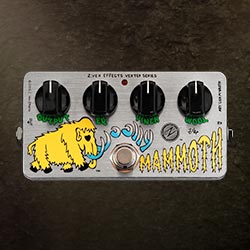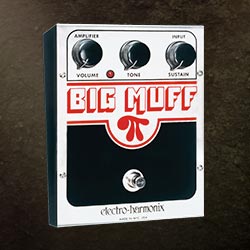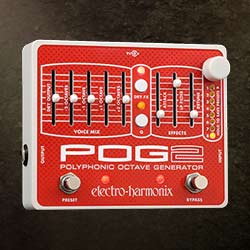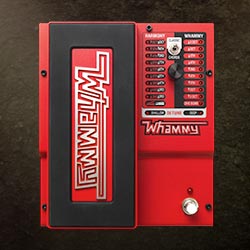Customer Kudos
"I recommend zZounds to everyone all the time, not just friends. The payment plans are a blessing & help to to many up n coming young musicians needing/wanting good gear & the Play as you Pay will help them grow faster & better."
February 22, 2024
Legends of Tone: Jack White
Dial in that White Stripes guitar sound with this gear.
Since his musical beginnings in 1990s Detroit, cutting his teeth as a drummer for various local bands, Jack White has made quite a name for himself. Whether you know him for his work with The White Stripes, his groups The Raconteurs and The Dead Weather, or his successful solo career, the sound of Jack White's fuzzy, octave-laden guitar tone is unmistakable.
While Jack is known for using a pretty staggering range of gear, including plenty of custom and vintage pieces, we were able to hone in on some gear picks that we think truly encapsulate his trend-setting sound. Check out this edition of Legends of Tone to see how you can dial in Jack White's unique tone with modern, readily available gear.
Learn about Jack White's unique tone and techniques on the zZounds Blog!
Check out our gear picks and see how they stack up in our Legends of Tone: Jack White video!
Explore more legendary artists' tones in our Legends of Tone series »
While Jack is known for using a pretty staggering range of gear, including plenty of custom and vintage pieces, we were able to hone in on some gear picks that we think truly encapsulate his trend-setting sound. Check out this edition of Legends of Tone to see how you can dial in Jack White's unique tone with modern, readily available gear.
Learn about Jack White's unique tone and techniques on the zZounds Blog!
Supro Belmont Vibrato

Think of Jack White, and the image that comes to your head may be The White Stripes' frontman dressed in red and white with a matching Airline Res-O-Glass guitar. While it might be hard to get your hands one of of those -- vintage models fetch nearly $4k on the used market -- you can easily acquire the Supro Belmont Vibrato as a worthy stand-in. Besides being appropriately dressed in red and white, this guitar sports a similar Acousti-glass top over a chambered mahogany body.
The Supro Belmont is acoustically loud, and its electric tone is pure 1960s rock 'n' roll, with an aggressive mid-range voice that, when paired with a sputtery fuzz, is perfect for capturing Jack White's raucous tone.
The Supro Belmont is acoustically loud, and its electric tone is pure 1960s rock 'n' roll, with an aggressive mid-range voice that, when paired with a sputtery fuzz, is perfect for capturing Jack White's raucous tone.
Fender '65 Twin Reverb
While Jack White has rifled through a plethora of amp setups, the rig that defined the sound of The White Stripes was the stereo combination of a Fender Twin and a vintage Silvertone. The White Stripes' minimalist garage blues rock pumped through that powerful tube amp combination struck a nerve with listeners, catapulting Jack's bombastic riffs into the mainstream. While Silvertone amps come and go on the used market in varying degrees of reliability, you can pick up a brand-new Fender '65 Twin Reverb Vintage Reissue today and pump out some garage rock riffs of your own through 85 watts of glorious Fender "blackface" tone.
The perfect pedal platform, the Fender Twin will stand up to whatever you throw at it thanks to its lofty clean headroom. This also makes it the perfect candidate for a stereo rig with a dirty amp, much like Jack White's original usage.
The perfect pedal platform, the Fender Twin will stand up to whatever you throw at it thanks to its lofty clean headroom. This also makes it the perfect candidate for a stereo rig with a dirty amp, much like Jack White's original usage.
Electro-Harmonix Big Muff Pi
The White Stripes' lack of a bassist meant that Jack White had to play double duty early on in his career. The bass-heavy fuzz tone of the Electro-Harmonix Big Muff gave his guitar the huge bottom end needed to fill out the mix, covering plenty of tonal ground for a two-piece band. While Jack has used a variety of fuzz boxes over the years, his most turned-to dirt pedal is the Big Muff Pi. Paired with a clean boost and an octave pedal, the Big Muff Pi can turn even the thinnest guitar tone into a woolly wall of sound.
Luckily for working musicians, the Big Muff Pi has remained a very affordable fuzz option, while still sounding incredible and maintaining its cool, vintage NYC looks. You can add one to your board for well under $100 and start ripping beefy fuzz riffs in no time.
Luckily for working musicians, the Big Muff Pi has remained a very affordable fuzz option, while still sounding incredible and maintaining its cool, vintage NYC looks. You can add one to your board for well under $100 and start ripping beefy fuzz riffs in no time.
Electro-Harmonix POG2
To help thicken up the mix of a two-piece band, Jack White turned to octave effects. First used on The White Stripes hit "Blue Orchid," the Electro-Harmonix POG and its subsequent variations have become a staple of Jack White's rig. While recording Get Behind Me Satan, White used the original POG to dial in the first and second octaves below, and one octave above the root note to give the heaviness that only four of the same note being played simultaneously can provide.
The current iteration of the POG is the POG2, which adds a little more flavor to the infamous 2005 original with eight programmable presets divided into voice mix sliders and effects setting controls.
The current iteration of the POG is the POG2, which adds a little more flavor to the infamous 2005 original with eight programmable presets divided into voice mix sliders and effects setting controls.
DigiTech Whammy
Jack White takes a different approach to octave and pitch shifting effects with his use of the DigiTech Whammy. First adopting the pedal as a way to make his solos stand out while playing in Detroit garage rock bands, White quickly incorporated the Whammy's wild pitch shifts into his everyday sound. Before the release of the POG in 2005, he solely used a Whammy in conjunction with his Big Muff -- always after the fuzz in his signal chain to maintain the powerful octave sound.
While it produces a similar sound to the POG, the Whammy allows for more nuance, as the octave effect is ushered in using the expression pedal. Manipulating the Whammy from a low octave to a high octave can achieve the sweeping, sliding sound heard in so many of Jack White's recordings. Pro tip: If you want to achieve Jack's Whammy sounds but can't give up the pedalboard real estate, check out the compact Whammy Ricochet.
While it produces a similar sound to the POG, the Whammy allows for more nuance, as the octave effect is ushered in using the expression pedal. Manipulating the Whammy from a low octave to a high octave can achieve the sweeping, sliding sound heard in so many of Jack White's recordings. Pro tip: If you want to achieve Jack's Whammy sounds but can't give up the pedalboard real estate, check out the compact Whammy Ricochet.
MXR M133 Micro Amp Boost
Every guitarist needs a good boost pedal from time to time, and Jack White's go-to boost is the MXR Micro Amp. Perhaps his most interesting use of the Micro Amp occurred when he designed his Gretsch "Triple Jet" for use with The Raconteurs. An MXR Micro Amp, wired directly to a third pickup, was installed inside the guitar to give the instrument an instantly overdriven sound. The Micro Amp can also be found in a more conventional location on Jack's board, giving a slight push to his Fender Twin and Silvertone amps, as well as his multiple fuzz pedals.
Another pedal that clocks in well under $100, the Micro Amp is an affordable option for slightly boosting your signal for leads, adjusting between various guitars, or boosting problematic pedals in your signal chain.
Another pedal that clocks in well under $100, the Micro Amp is an affordable option for slightly boosting your signal for leads, adjusting between various guitars, or boosting problematic pedals in your signal chain.
ZVEX Vexter Woolly Mammoth

Similar to a Big Muff, the ZVEX Woolly Mammoth delivers tremendous bottom end, but is also sensitive and touchy, resulting in the "velcro-y" gated wave shape fuzz that's prevalent in much of Jack White's more recent music. Originally designed for bass, it's no wonder that the Woolly Mammoth found its way onto White's fuzz short list, thanks to his love of low end and the pedal's ability to play nicely with octave and pitch shifting effects like the Whammy and POG.
Add the Woolly Mammoth to your board for a slightly different flavor of fuzz than what Big Muff-style pedals can deliver, and enjoy all the hairy goodness that ensues when you dime the "wool" knob.
Add the Woolly Mammoth to your board for a slightly different flavor of fuzz than what Big Muff-style pedals can deliver, and enjoy all the hairy goodness that ensues when you dime the "wool" knob.





